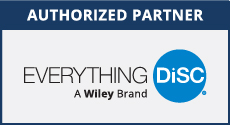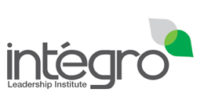When was there ever a period in history without at least some level of uncertainty? But now more than ever, that uncertainty seems to have spread to almost every aspect of life and work. We’re experiencing times of tremendous change, and that requires us to think differently about how we lead and manage others. These circumstances require us to think about how we can engage our workforce even more and neutralize the impact of uncertainty by including every stakeholder involved in running a successful business – vendors, customers, leadership, and individual employees especially.
So, how can organizations promote individual engagement to meet the extreme challenges and uncertainty of the times? And what can PXT Select™ do to help?
We explore the answers to these questions in the article below.
Let’s get to it.
What Is Employee Engagement?
If you’re asking this question, you’re already well on your way to solving the problem.
While employee engagement starts with job satisfaction and happiness, true engagement involves several additional ingredients. According to Gallup, engaged employees feel involved in, enthusiastic about, and committed to their work and their organization. Gallup breaks employee engagement down into three levels:
Engaged: Engaged employees feel highly involved in and enthusiastic about their work and workplace. They drive performance and innovation. They display high levels of productivity because they feel supported, valued, and listened to.
Not Engaged: These employees feel unattached to their work and company. Since they feel like their employer is not meeting their engagement needs, these employees put time—but not energy or passion—into their work.
Actively Disengaged: Actively disengaged employees aren’t just unhappy at work. They resent their employers for failing to meet their individual needs. They often act out in their unhappiness, which runs the risk of undermining engaged coworkers.
To successfully engage employees—especially during times of change and uncertainty—you must empower them to be part of the solution and use their strengths to meet the challenges your organization faces.
Managing uncertainty in an organization can create tension, cause breaks in conversations, or take a toll on employee relationships, especially when people are working remotely or navigating a crisis. In these instances, employees face increased pressure and obstacles to perform at their highest levels.
However, leaders who see these critical times as opportunities to propel learning and development, authentically connect at a human level, and appreciate the value of each individual will discover how these experiences drive employee engagement. If you can handle a crisis together, what can’t you do?
So, how can organizations help employees engage with their work and increase productivity even during a crisis or uncertain moments?
Follow the principle of OWN.
Increasing Individual Engagement Through the Principle of OWN
Individual employees represent an organization’s biggest asset. Satisfied, highly motivated, and loyal employees provide a competitive advantage—especially during times of crisis when organizations must be agile and efficient to meet their customers’ needs. Finding success and achieving satisfaction in their professional lives requires individual employees to OWN their engagement by prioritizing the following aspects of work:
O: Ownership—It’s up to individual employees to take responsibility for their experience. Cultures of engagement encourage employees to visualize what success looks like on a personal level. Whether your business is stable or experiencing a crisis, individuals who take ownership of their experience will go above and beyond to deliver on their commitments, remain calm, and maintain a positive outlook.
W: Work with talents and strengths—Individual employees should talk with managers about where they can focus their interests, talents, and aspirations. If an individual feels like their talents are underutilized or that they need to stretch themselves in certain ways, they should feel welcomed to start a conversation with their manager. This is true for people who work together in traditional work environments and for people who work remotely, where certain traits, such as independence and collaboration, come in handy.
N: Nurture relationships—Relationships can make or break someone’s work experience. Getting coworkers to know each other, whether it’s through a happy hour, virtual meeting, or a hallway convo, can drive engagement. But it’s also important for managers to nurture relationships and have open conversations with the individuals they manage as well. Even if an individual or a team works remotely, maintaining healthy relationships and appreciation for what each person has to offer plays an important role in success.
Allowing employees to OWN their experience can help an organization boost engagement, especially during difficult times that require people to go above and beyond. But which tools can companies use to promote individual OWNership and engagement? That’s what we explore next.
The PXT Select™ Solution for Boosting Individual Engagement
When it comes to boosting employee engagement, PXT Select doesn’t mess around. With over twenty years of experience under its belt, the solution offers a variety of tools to help companies engage employees on an individual level.
PXT Select starts by collecting information on each employee’s cognitive skills, behavioral patterns, and motivational interests. This information helps organizations answer three important questions about each employee: Can the employee do the job? How do they do the job? Will they enjoy the job?
When an employee fails to meet expectations or stops enjoying their work, engagement drops. That’s why PXT Select measures an individual’s thinking style for solving problems, gauges their personality traits (like how the employee handles conflict or communicates with coworkers), and reveals intrinsic motivational interests to identify how much they’ll enjoy doing their job.
This information helps organizations select the right people and place them in the right roles. From there, managers and employees can have productive and informed conversations that focus on leveraging these individual characteristics to increase employee engagement and productivity.
Here’s an example of how that might work.
PXT Select in Real Life
In a traditional work environment, a team of customer service employees, for example, might do well at leveraging each other’s personality traits—like being sociable, outgoing, independent, and agreeable. To meet customer needs, customer service reps need to have a positive and cordial outlook, make decisions on their own as issues arise, and listen well to the people they interact with.
Suddenly working from home during a crisis, however, can test these individuals in their ability to exercise these crucial personality traits. But, for all the unknown encountered during a crisis, the team has their PXT Select results to help them understand how their behaviors might work as strengths or become challenge areas when conditions change. Under the potentially isolating circumstances of working remotely, finding opportunities to connect virtually with coworkers and managers helps reps maintain social interaction and collaborative, positive, and fun team culture. However, these individuals will also need to stretch and find comfort in working alone for extended periods of time.
While they work well independently, these individuals still need to collaborate and work as a team. How do they stay connected and ensure everyone’s input is taken into consideration? They’ll need to stretch out of their comfort zones to discern when to make a call on their own and when to lean on the guidance of their managers when working remotely. For individuals who operate at a slower pace, not having the physical presence of their teammates and managers to keep them motivated and productive might pose a challenge. They may need to find ways to stick to a daily schedule or track milestones toward the completion of a project. By providing information into who each rep is, how they think and work, and what motivates them, mangers and their team members can have informed conversations and discover solutions that keep each individual focused and productive.
In a crisis, every interaction must count, which means reps must step up, assert themselves, and get the information or provide the hard answers needed to address each new situation. By knowing where to stretch, customer representatives can identify where they might get hung up and how to improve at what they do. During a crisis, that insight could make all the difference a company needs to survive.
To learn more about how PXT Select can help the members of your organization work effectively from home, connect today with the team at Laura A. Davis and Associates, Inc., an Authorized Partner.











